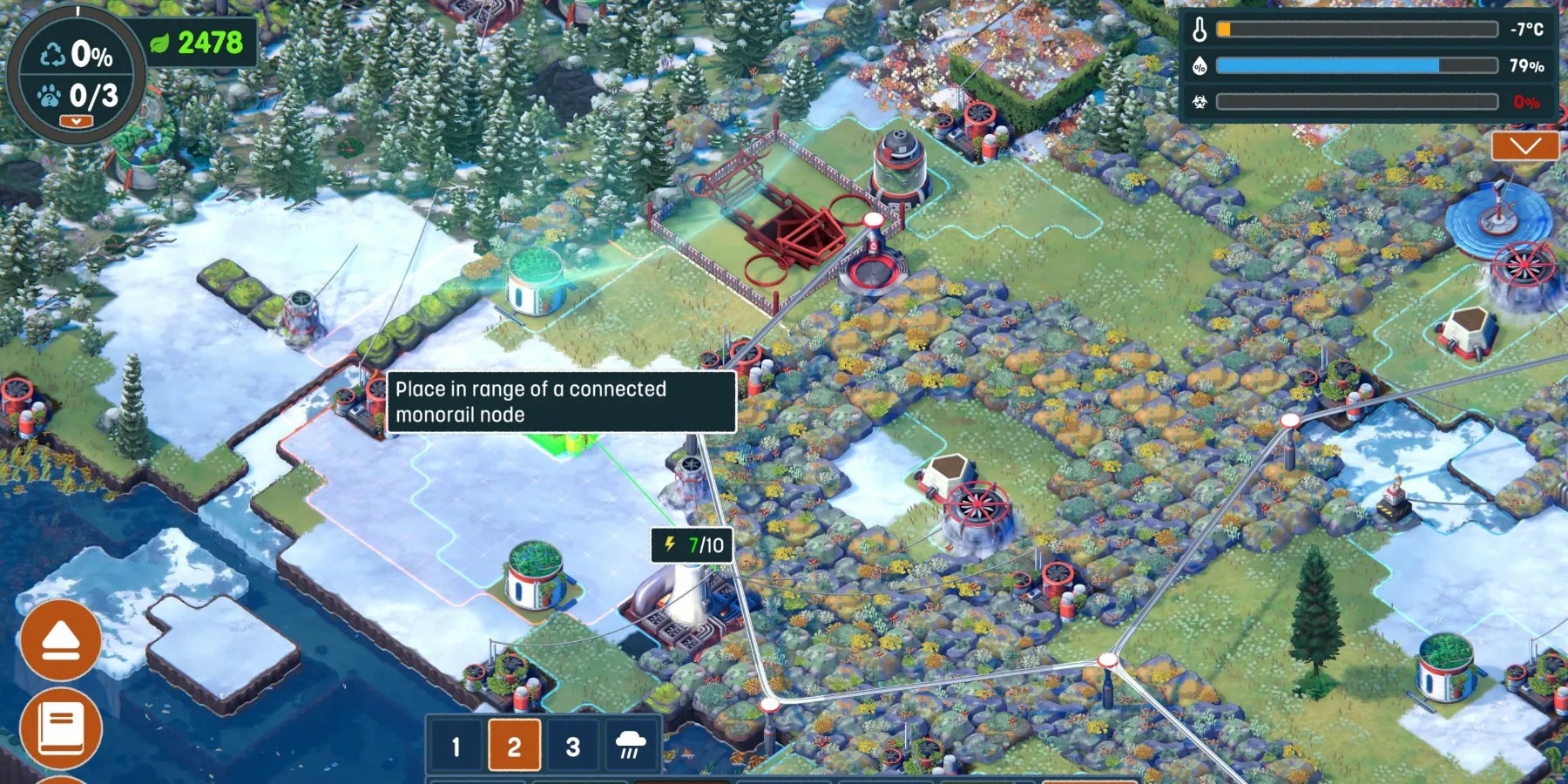Indie developer Free Lives’ latest title,Terra Nil, is a city-building game with a twist. Though successful gameplay relies upon the placement of buildings, the ultimate goal is to restore barren environments and transform them into thriving natural paradises. Each stage requires players toterraform their mapbefore ultimately wiping away any trace that they were there.
RELATED:Mistakes To Avoid When Playing Terra Nil
Terra Nilwas inspired by the rewilding movement and invites its players to restore biomes, bring in wildlife, and transform the landscape around them. To do this requires the strategic placement of buildings, each having their own purpose and effect. There are many buildings available inTerra Nil, but some are more crucial than others
1Turbine
The Turbine building is perhaps the most essential machine inTerra Nil. It provides powerin the form of electricityto other neighboring buildings and allows players to increase the areas that they can terraform. The Turbine is part of the first tier of buildings that become available early on in the game.
Turbines will cost players 75 Leaves, the in-game currency resource earned through greenery. It takes up only one tile but has a power range of around 80 tiles. Turbines can only be built on top of rock tiles, but these can be natural or created by the Calcifier.
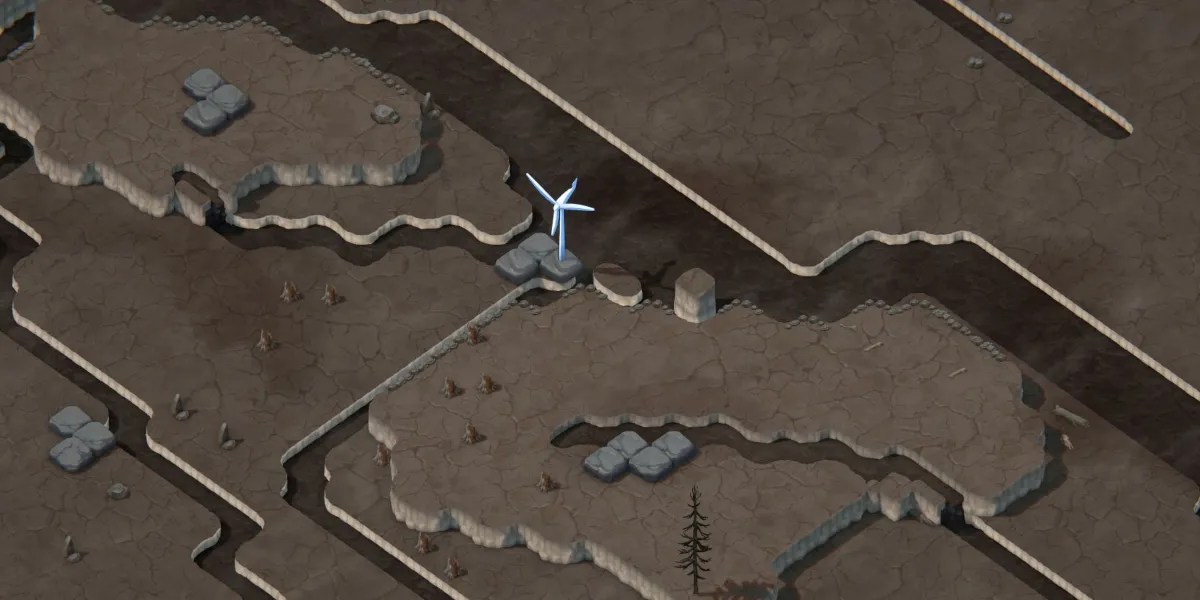
2Toxin Scrubber
Another of the most integral buildings for successfulTerra Nilgameplay is the Toxin Scrubber. This building transforms the wasteland tiles that every map begins with into soil. Creating these soil tiles will grant players with one Leaf for every tile restored, and is the base on which every other tile type can be created.
Toxin Scrubbers cost 50 Leaves and can be built on any set of four tiles within range of a Turbine. These buildings will onlyconvert the wastelandtiles in their immediate area but have a range of around 80 tiles. Their cost can be reduced to 25 Leaves later in the game.
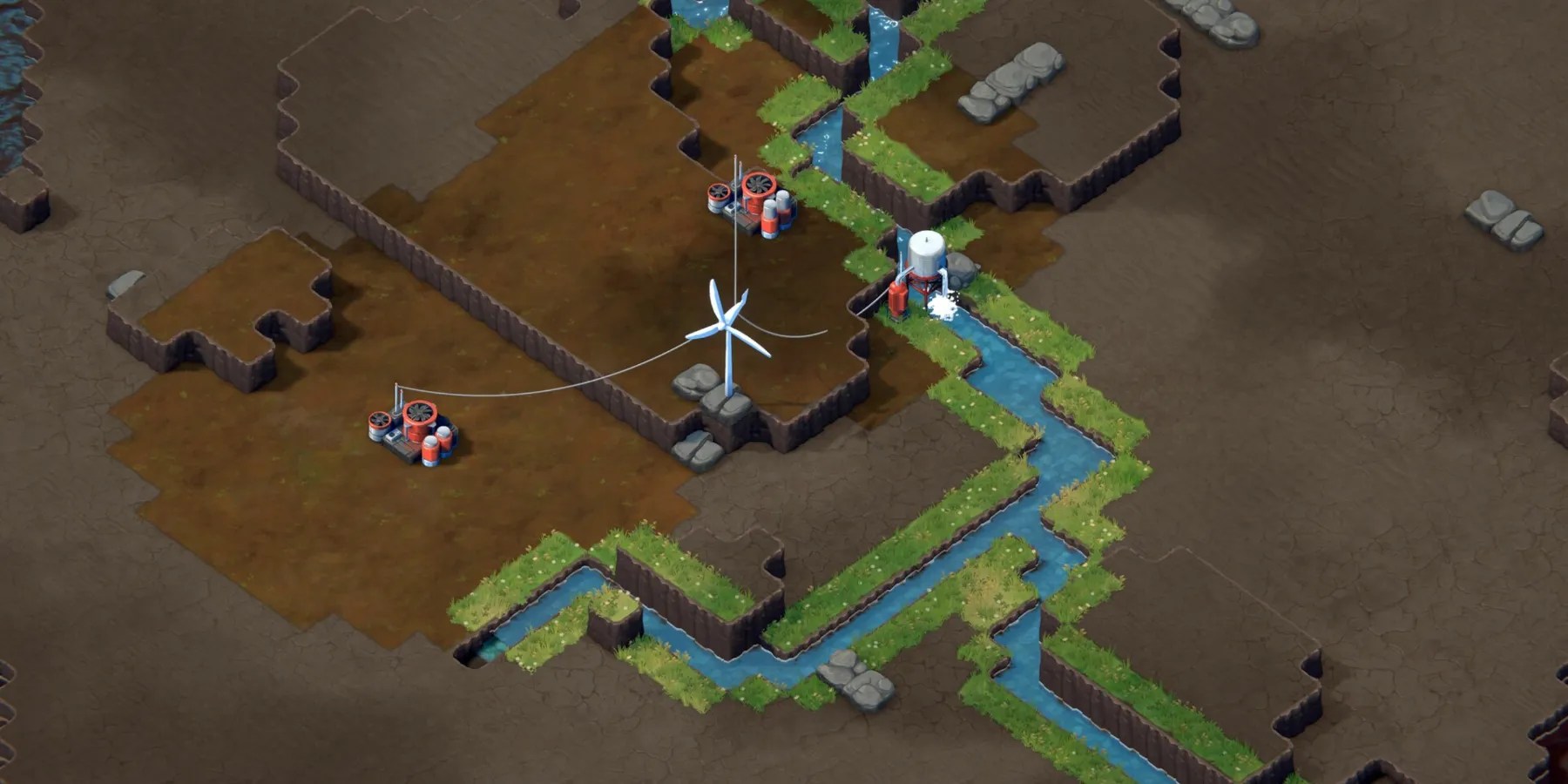
3Irrigator
As the ultimate goal of the game is toincrease greenery levelson the map, the Irrigator is another essential building inTerra Nil. It operates similarly to the Toxin Scrubber and converts soil into greenery tiles, earning one Leaf per tile. Greenery is essential for creating biomes such as grassland, fynbos, and forests.
RELATED:Beginner Tips For Terra Nil
Irrigators will cost players 50 Leaves and also take up a square of four tiles when placed on soil. The range of tiles that they convert is around 200, however the area covered is in a bidirectional L-shape. It’s best to use the Irrigators in interlocking placements to ensure the most efficient conversion.
4Calcifier
Calcifiers are a handy littleTerra Nilbuilding that allows players to create new rock tiles wherever they wish. It works by crystallizing the greenery tiles in the immediate area and transforming them into the same grey stone thatoccurs naturally on the map.
Calcifiers cost 75 Leaves but can be reduced to the cost of 40 Leaves later in the game. Calcifiers only occupy one tile, however they must be placed on water. As some other buildings require rock tiles to be placed, Calcifiers are a great tool for players to extend their influence.
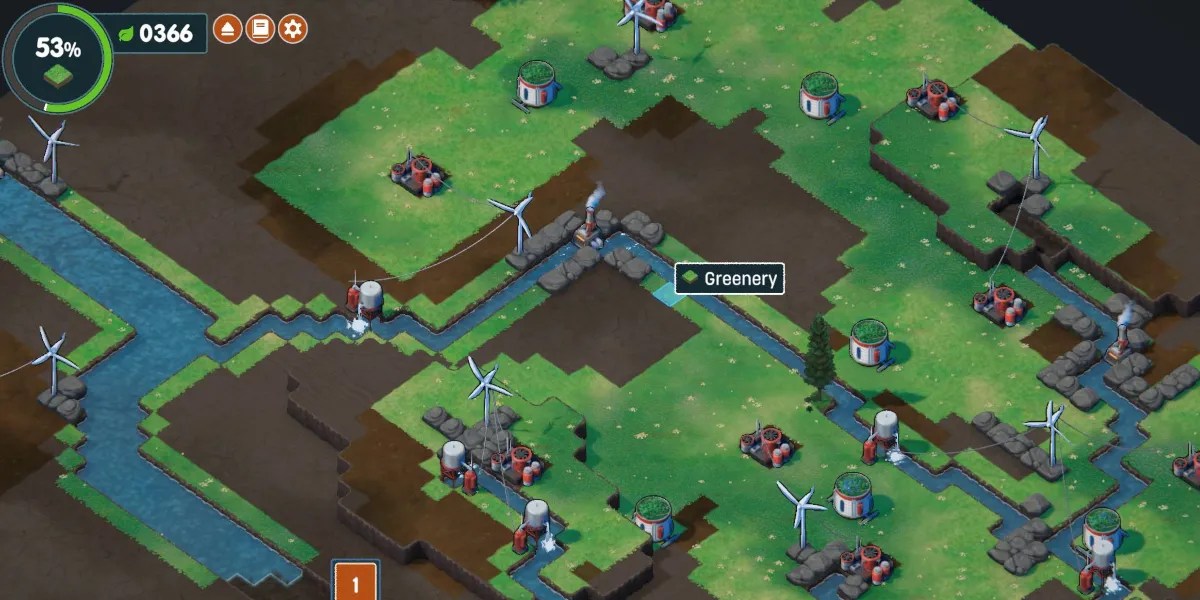
5Excavator
Another of the earliest buildings available to players that’s a particularly handy tool is the Excavator. This building will dig a long trench in the ground that can then be filled with water tocreate a river system. Not only do river systems contribute to the overall restoration of each map, but they are essential in the final recycling stage too.
Excavators are quite expensive at 200 Leaves, so it’s best to focus on increasing greenery levels before buying them. They take up a space of nine tiles and dig a trench that is one tile wide and up to 20 tiles long. This is another building that can have a reduced cost of 100 Leaves later in the game and can also be reduced to only one tile in size.
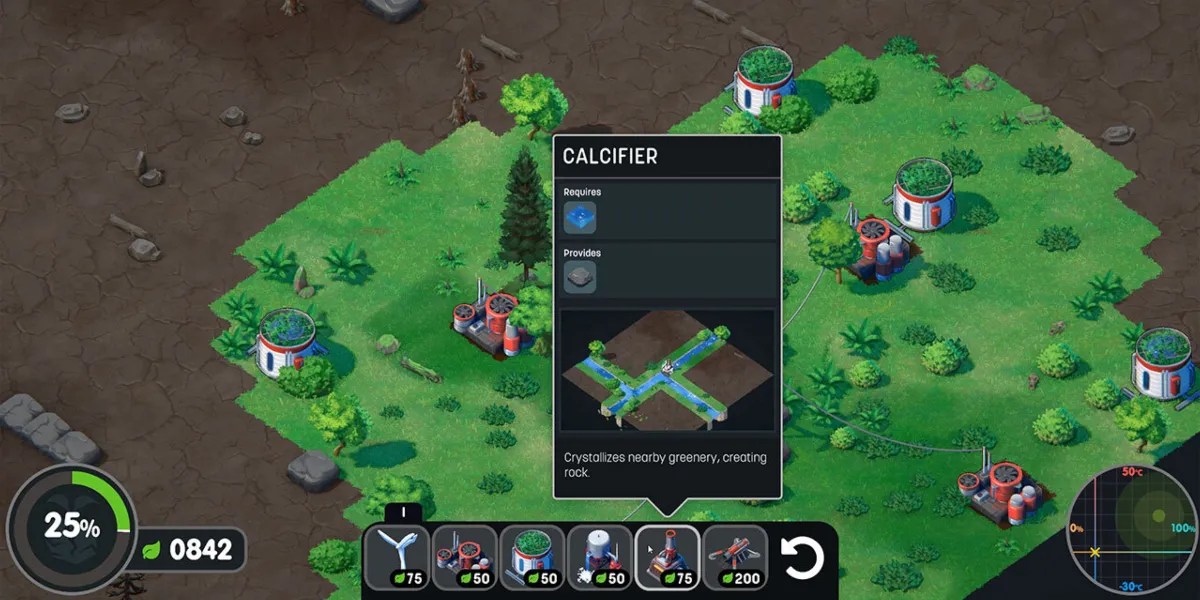
6Research Centre
In the second tier of unlocked buildings, players will gain access to the Research Centre among others. This building may sound unassuming, but it has a vastly different impact than many others. Instead of having a terraforming purpose, the Research Centre lowers the cost of nearly every early level building available.
RELATED:Best Free Simulation Games On Steam
The Research Centre costs 25 Leaves and can be built wherever power is available. It takes up only four tiles has no placement requirements other thanneeding electricity. It’s an incredibly useful building that can be easily tucked away in a low-impact area of the map.
7Pylon
Pylons will be become available to players later on inTerra Nil, but they are still one of the best buildings for players to use. There are two main types of Pylons with each having their own unique effect on the map’s environment. Thankfully their effects are fairly clear from their names – Temperature Pylon and Humidity Pylon.
Each Pylon will cost 75 Leaves, and requires power and one rock tile for its placement. In the case of the Humidity Pylon, it also requires water tiles close by to be effective. These buildings are usually essential in the completion of the final optional goal, whichoften brings rainand resources to the map.

8Monorail
In one of the later stages of the game,Terra Nilintroduces the Monorail system through the use of Monorail Nodes. These Nodes connect together to provide a system of transport for players, as well as the main system through which the recycling stage will be completed. Using the Monorail, players will be able to move their buildings around the map.
Monorail Nodes cost 25 Leaves per building and an additional Leaf cost is incurred if players use it to move buildings. They require a tile of rock to build on and must be placed within reach of another Node to be functional. Strategic placement of these Nodes is essential, especially for the recycling stage.
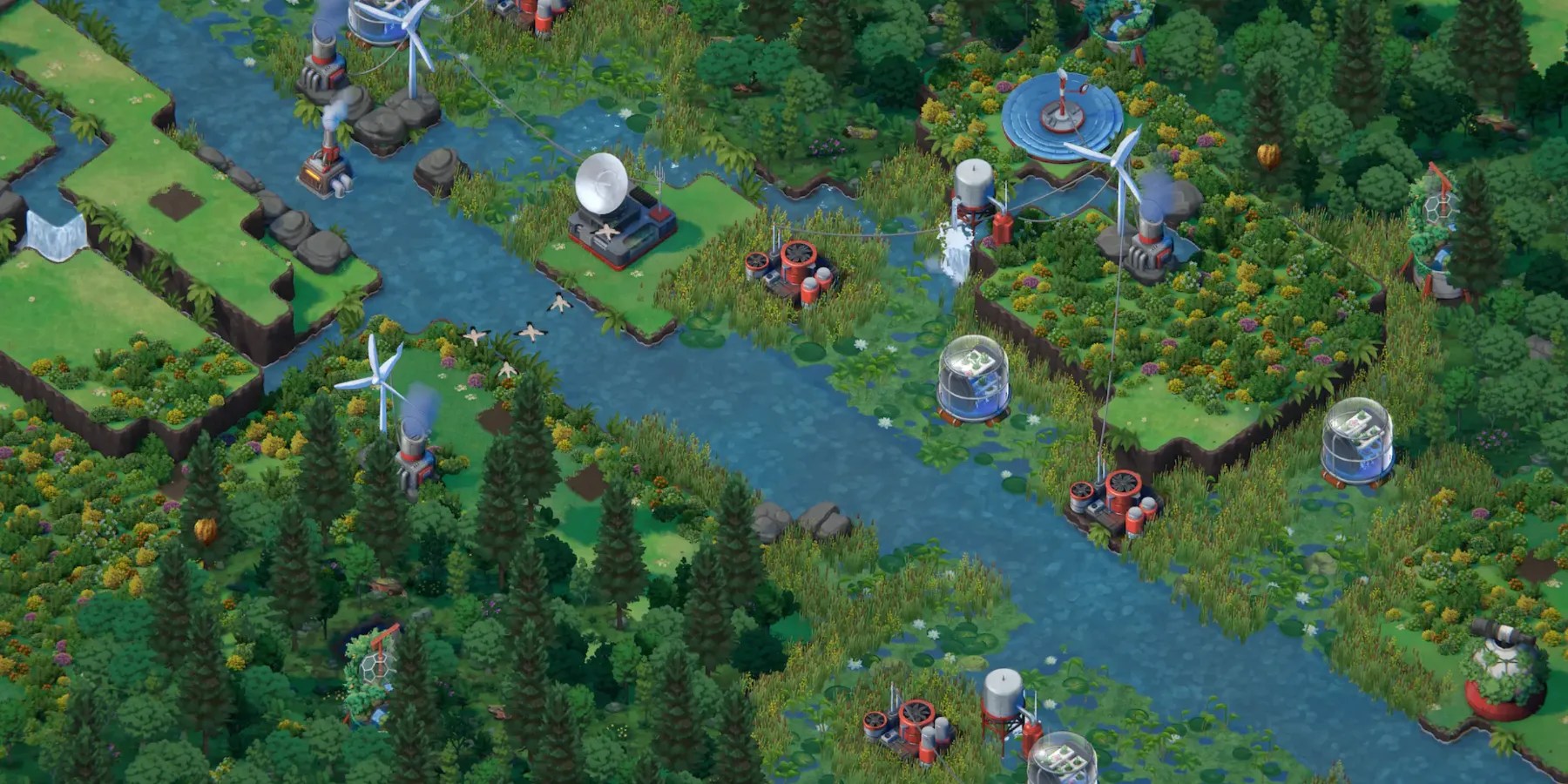
Terra Nilis available now on PC, iOS, and Android.

